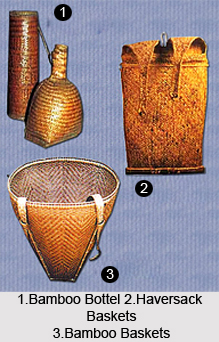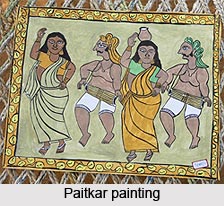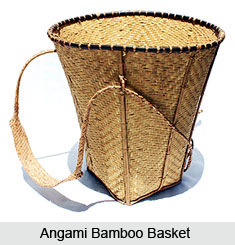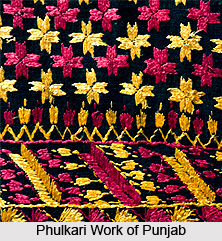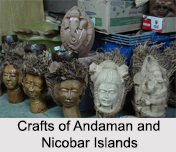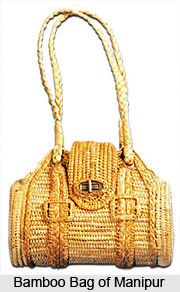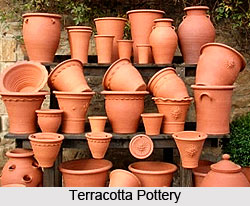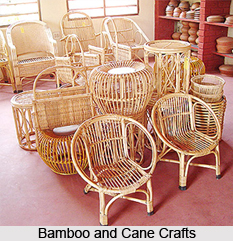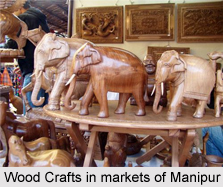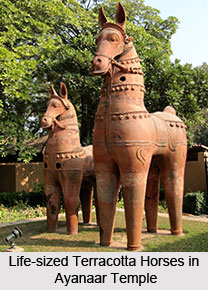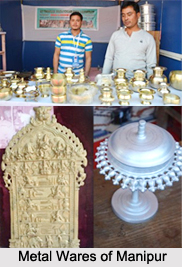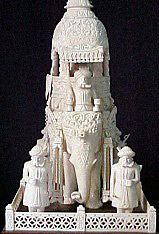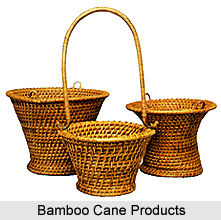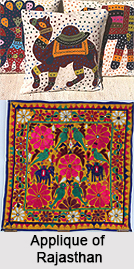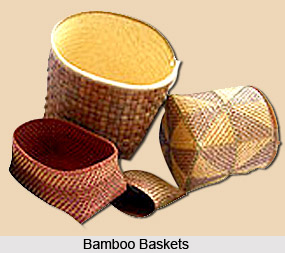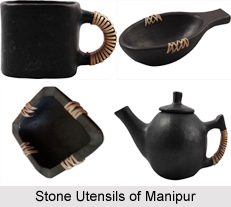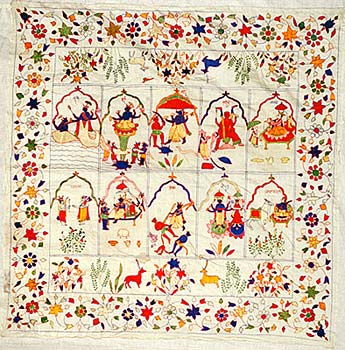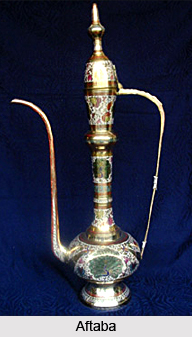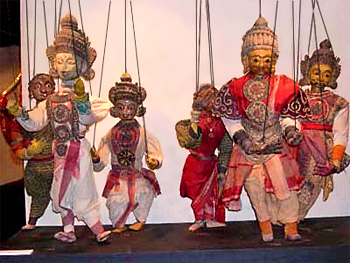Introduction
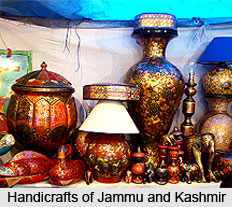 Crafts of Indian states are innumerable and which have attained commercial proportions not only in India but also abroad. They make excellent souvenirs for tourists and are sold through various handicrafts emporium. Craft making is an ancient tradition in India, which has withstood the test of time, and this tradition has passed on from generation to generation. The Indian craftsmen are adept in manufacturing diverse crafts, which have attracted the attention of connoisseurs of craft all over the world.
Crafts of Indian states are innumerable and which have attained commercial proportions not only in India but also abroad. They make excellent souvenirs for tourists and are sold through various handicrafts emporium. Craft making is an ancient tradition in India, which has withstood the test of time, and this tradition has passed on from generation to generation. The Indian craftsmen are adept in manufacturing diverse crafts, which have attracted the attention of connoisseurs of craft all over the world.
Crafts of North India
North India is famous for weaving and therefore one can find a lot of colourful and intricate embroidery here. Owing to the chilly winters the locals of different states weave colourful shawls, which have a huge demand in the national and international market. Mandi, Kullu and Chamba in Himachal Pradesh are famous for shawls. Shahtoosh and Jamawar are the best-known shawls of Kashmir and weaving these shawls require great dexterity and sense of artistry. Haryana is also known for shawls where the bagh design is very common.
Embroidery in North India
Embroidery is another important craft of North India. It is more of a tradition, which girls learn in their childhood and do in their leisure. This has become a full-fledged industry in the region. Punjab is known for Phulkaris, which is magnificent embroidery where complex designs are made through horizontal, vertical and diagonal stitches. Rumals or handkerchiefs of Chamba in Himachal Pradesh have a folk style of embroidery where the colours are bright and contrasting. In Delhi and Uttar Pradesh one can find spectacular embroidery with gold thread, which is called zardozi. Intricate designs in gold are made on silk, velvet and even tissue materials. Uttar Pradesh is also known for delicate embroidery called Chikankari, which has a relatively good demand in the market.
Carpet Weaving in North India
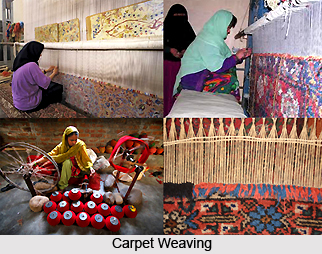 Carpet weaving and making durries (floor coverings) is another important craft among the north Indian states. Uttar Pradesh has the largest number of carpet weaving industries in India and they have their own distinct designs such as Taj Mahal, Kethariwala jal, jamabaz and kandhari etc. Punjab is famous for durries, which are woven by women from handspun yarn. Jammu and Kashmir is known for the silk carpets, which are mostly woven in Srinagar. The various silk carpets are tabriz, kashan, kirman, bokhara, qum and hamdaan. Himachal Pradesh is also known for carpets like karcha, chuktu and chugdan. The state is also known for producing cotton durries, which are mostly made in blue or red colours. The durries of Haryana is rather coarse and is concentrated in and around Panipat.
Carpet weaving and making durries (floor coverings) is another important craft among the north Indian states. Uttar Pradesh has the largest number of carpet weaving industries in India and they have their own distinct designs such as Taj Mahal, Kethariwala jal, jamabaz and kandhari etc. Punjab is famous for durries, which are woven by women from handspun yarn. Jammu and Kashmir is known for the silk carpets, which are mostly woven in Srinagar. The various silk carpets are tabriz, kashan, kirman, bokhara, qum and hamdaan. Himachal Pradesh is also known for carpets like karcha, chuktu and chugdan. The state is also known for producing cotton durries, which are mostly made in blue or red colours. The durries of Haryana is rather coarse and is concentrated in and around Panipat.
Pottery in North India
Various kinds of pottery have developed in the states, which have taken the form of a craft. Pottery as a craft varies from state to state so while in Uttar Pradesh shades of pottery are in colours like orange, brown and light red. Kangra in Himachal Pradesh has rich tradition of pottery in black or dark red. In Haryana pottery is a village craft where the kick-operated type is common. Delhi has a tradition of blue pottery, which has a unique style of its own.
Woodwork in North India
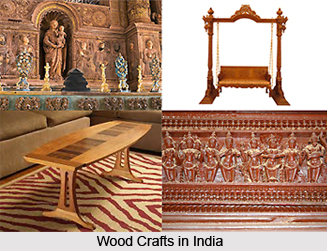 The northern states of India also have a rich tradition of woodwork. Hoshiarpur, Jalandhar, Amritsar and Bhera of Punjab are famous for making exquisite wooden furniture. Kashmir is well known for making wooden items mainly from the wood of the walnut tree like jewellry boxes, screens, room dividers, fruit bowls, trays etc. With abundant forests, Himachal Pradesh specializes in wooden crafts, where intricate and spectacular designs are carved on wood. Saharanpur in Uttar Pradesh specializes in wooden furniture made from shisham, sal and dudhi wood.
The northern states of India also have a rich tradition of woodwork. Hoshiarpur, Jalandhar, Amritsar and Bhera of Punjab are famous for making exquisite wooden furniture. Kashmir is well known for making wooden items mainly from the wood of the walnut tree like jewellry boxes, screens, room dividers, fruit bowls, trays etc. With abundant forests, Himachal Pradesh specializes in wooden crafts, where intricate and spectacular designs are carved on wood. Saharanpur in Uttar Pradesh specializes in wooden furniture made from shisham, sal and dudhi wood.
The crafts of north Indian are known for their vibrancy, aesthetic sensibilities and decorative abilities. It can be said that crafts produced in the north Indian states have withstood the test of time. Innovation and invention continues even today to give the crafts a more contemporary look.
Crafts of North East India
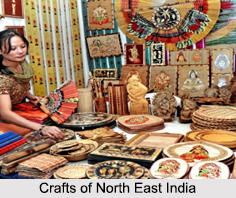 Crafts of North East India have a rich craft tradition that speculates on their creations. Arunachal Pradesh, Assam, Manipur, Meghalaya, Mizoram, Nagaland, Tripura and Sikkim; each state presents their speciality in craftsmanship. North East India is the abode of a large number of tribes and sub-tribes. They possess a vigorous craft tradition and every tribe excels in craftsmanship. The superiority manifests itself in the various craft items which stand the evidences of their dexterity.
Crafts of North East India have a rich craft tradition that speculates on their creations. Arunachal Pradesh, Assam, Manipur, Meghalaya, Mizoram, Nagaland, Tripura and Sikkim; each state presents their speciality in craftsmanship. North East India is the abode of a large number of tribes and sub-tribes. They possess a vigorous craft tradition and every tribe excels in craftsmanship. The superiority manifests itself in the various craft items which stand the evidences of their dexterity.
Crafts of Arunachal Pradesh
Arunachal Pradesh presents an ambit of crafts including carpet making, masks, painted wood vessels, bamboo and cane crafts, weaving, woodcarvings and jewellery making. Other miscellaneous crafts like handmade pottery, brass cutting, silver works, etc are also being presented by the artisans of Arunachal Pradesh. They also make numerous articles with goat hair, ivory, boar"s tusks, beads of agate, and other stones as well as of brass and glass.
Crafts of Assam
The Crafts of North East India have a rich variety such as the people of Assam have excelled in a rich variety of arts and crafts. The array of crafts encompass handloom weaving, cane and bamboo works of Assam, sholapith, brass and bell metal works, ivory, wood-work, pottery and fibre craft. Handloom weaving comprises the culture of Eri, Muga and Mulberry Silk.
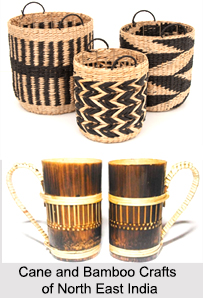 Crafts of Manipur
Crafts of Manipur
The Crafts of North East India have a spectacular range of variety. The artisans of Manipur have contributed to the richness and variety of Indian culture with its peculiar blend of tribal traditions and Vaishnavism. Of the numerous colourful crafts of Manipur, their textiles, strong bell metal bowls, cane and bamboo craft of Manipur and mats made of spongy reeds can be traced as having rich artistry. Manipur is also well known for its beautiful dolls and toys of straw and clay are also remarkable craftsmanship of Manipur.
Crafts of Meghalaya
The Crafts of North East India have been enriched by the distinct craftsmanship of Meghalaya. Cane and bamboo craft of Meghalaya holds a prime place. Artistic textile weaving and woodcarving is practiced in Garo hills. Silk weaving of Eri silk is very famous. Carpet weaving, ornaments, musical instruments are other specialities. But the unique craft of this state is Pineapple fibre articles a in which fibre from its leaves is utilized for making various types of nets, bags and purses.
Crafts of Mizoram
Being the domicile of a plenty of skilled artisans, Mizoram showcases decent variations in crafts like weaving, bamboo and cane craft of Mizoram, pipes, jewellery and musical instruments. The art and craft forms of Mizoram occupy a very important sector of the industrial market of the state.
Crafts of Nagaland
The Crafts of North East India are made wealthier by the decent crafts of the Nagaland. They incorporate weaving, basketry, woodwork and jewellery making, pot making, products made out of shell and beads, bird"s wings and flowers, woodcarvings generally associated with the religious beliefs and practices, apart from preparing objects for daily use like utensils, etc.
Crafts of Tripura
The residents of a huge number of tribes, Tripura keeps the tradition of a huge array of crafts that adds to the glory of the Crafts of North East India. Handloom is the most important craft of the state. The foremost feature of Tripura handloom is vertical and horizontal stripes with scattered embroidery in different colours. It is followed by cane and bamboo craft of Tripura. The well admired handicraft items of Tripura are bamboo screens, lamp stands, tablemats, sholapith, woodcarving, silver ornaments and other crafts that are practiced.
Crafts of Sikkim
Sikkim is resplendent with not only its natural beauty but with its art and craft too. The cultural richness of Sikkim is visible in its quality handicrafts. The wood carving in Sikkim is symbolic of true art of India. The natives of Sikkim weave various striking designs and patterns. They weave woollen blankets, bags, shawls and jackets with the reflection of their mastery over the art.
The crafts of North East India has a vast variety as the artistry differs from one state to another and each carries a distinct style that stands alone in the Indian market. The culture and the dexterity of the people add variety to the rich tradition of Crafts of North East India.
East Indian Crafts
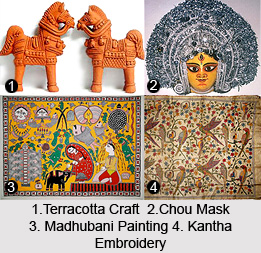 Handicrafts have always held an integral position in the lives of Indians. In East India also crafts work has maintained its rich legacy and culture. The East Indian Crafts speak of dexterity and sense of artistry of the locals. The East Indian states of India comprise of Bihar, West Bengal, Odisha and Jharkhand.
Handicrafts have always held an integral position in the lives of Indians. In East India also crafts work has maintained its rich legacy and culture. The East Indian Crafts speak of dexterity and sense of artistry of the locals. The East Indian states of India comprise of Bihar, West Bengal, Odisha and Jharkhand.
Toy making
Toy making is a craft in the region. In Toupadana of Jharkhand state, "wooden toys" are made which are completely abstract. The toys are always in pairs, which are stunning and very original as they are different from other dolls. In Krishnagar of West Bengal state, "traditional dolls" are made from clay, which have been widely acclaimed and are displayed in museums all over the world.
Textile Craft
West Bengal is also famous for kantha embroidery and weaving cotton sarees in handlooms, which are called "tant sarees". Another variety of silk sari, which is produced in West Bengal, is the Baluchari sarees. The Baluchari sarees mainly come in dark shades like red, purple and chocolate. The royalty patronized this craft in the past.
Mask Making
An essential part of East Indian crafts is "mask making". The masks of Jharkhand are very different from those of Bihar as they are fiercer because the facial expression is overstated. In Purulia district of West Bengal, chou masks are made of papier - mache which has an earthy element in it.
In Odisha, painted masks are created out of wood, sholapith and other available raw materials. The masks are painted in soothing colours. The papier - mache masks of Bihar have acquired a modern dimension over the years. Originally the masks were made of wood, bamboo and pumpkin shells.
Paintings
Bihar is also well known for its Madhubani paintings which have been a part of the state since the time of Ramayana. In the earlier days, the paintings were created on mud plastered walls. Now they are drawn on handmade paper, canvas and different types of clothes. The themes of Madhubani paintings revolve around images of deities, birds, animals etc.
Metal craft
Odisha is the hub of pure silver filigree work. Cuttack is famous for this craft which is centuries old and is often called Chandi Tarakasi. It is believed to have been introduced by the Mughals. The process is highly elaborate, using precision, patience and skilled handwork, apart from the ingenuity and creativity of the artisans.
Clay craft
West Bengal is famous for terracotta craft where the terracotta horses are exquisite piece of artistry. The finest patterns of terracotta panels can be found in Bengal towns of Murshidabad, Birbhaum, Bishnupur, Hooghly and Digha. The theme is generally folk and the patterns are fairly highlighted with traditional skill and explicit artwork.
Wood craft
Jharkhand, which has dense forests, have mastered the craft of woodwork, which includes attractive articles like door panels, boxes, windows, wooden spoons etc. In Bihar, carpets, lacquer ware and wood inlay are popular.
Western Indian Crafts
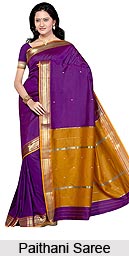 The crafts of Western India bear ample testimony to the rich cultural heritage of the region. It mainly includes states of Goa, Gujarat, and Maharashtra which are mainly coastal areas of the Arabian Sea. As tribal settlement is more prominent in the region most of the handicrafts are made using naturally available materials like wood, shells, etc. These crafts were mainly used as home utility items but with modernization transformed to home décor items.
Embroidery
The crafts of Western India bear ample testimony to the rich cultural heritage of the region. It mainly includes states of Goa, Gujarat, and Maharashtra which are mainly coastal areas of the Arabian Sea. As tribal settlement is more prominent in the region most of the handicrafts are made using naturally available materials like wood, shells, etc. These crafts were mainly used as home utility items but with modernization transformed to home décor items.
Embroidery
Embroidery is a common craft of the region. Saurastra and Kutch region of Gujarat is known for lavish embroidery. The famous embroideries of Gujarat are kathi, heer, abhala that is mirror embroidery and appliqué work. Crochet lace work is famous in Jamnagar of Gujarat. The state is also well known for Bandhani, which is the craft of tie and dye. Jamnagar, Anjar and Bhuj are famous centers for this craft. Crochet and embroidery has a traditional mark in Goa. Rajasthan also has a distinct style of embroidery. The locals of Jaisalmer have a beautiful range of embroidery with every variety of stitch. The pichwai of Nathdwara and gota work are some exclusive embroidery of Rajasthan.
Handloom craft
Handloom is another craft of the region and each state specializes in weaving some kinds of saris. Maharashtra is famous for Paithani saris, which has a magnificent pallu woven in brightly coloured rosettes and birds. The tussar silk produced in Maharastra is called kosa silk. Some varieties of kosa silk produced here are motha choukada, lahan choukada, gunja salai, teen dhari choukada and rasta choukada. Masuriya is a rare cotton fabric woven in Rajasthan, which has a lovely texture. Himrro is another type of brocaded material where the jala design is made. The jala design consists of intricate geometrical designs like circle, octagons, ovals, ellipses, and diamonds, flowers like rose, lotus, and jasmine. Gujarat is known for tanchoi fabric, which has bright base colours like blue, purple, green or red. Patola is a colourful saree, which has a figured body and a subtle merging of one shade in another.
Pottery
Pottery, which is a traditional craft, has developed in to a full-fledged industry, which produces utility and decorative items. In Gujarat, Kutch and Saurastra are known for beautiful earthenware in attractive shapes and designs. In Saurastra a special type of clay is available which is called gopichandan. An item made of gopichandan has glossy finish. The pottery of Goa has a style of its own with its deep rich red and velvety surface. Although pottery is made all over Goa, Borde and Bicholim are two famous centers of earthenware. Rajasthan produces a variety of pottery like; Bikaner is noted for its painted pottery, Pokhran for its pottery with geometrical patterns and Alwar for its kagzi pottery. The blue pottery of Jaipur is also very famous.
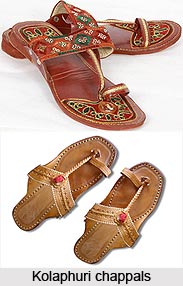
Wood craft
Woodcarvings find a special place in the crafts of the western region. The woodcarvings of Gujarat have mostly floral and geometrical designs. The wood carvings of Goa are an aesthetic blend of Portuguese and Indian cultures and the designs are primarily floral, animal and human figures. Pipar and Bhari Sajanpur in Pali district is known for producing thin bowls from rohida wood.
Miniature Paintings
Indian painting, also called Jaina Painting, a highly conservative style of Indian miniature painting. Largely devoted to the illustration of Jaina religious texts of the 12th–16th century are popular in the region of Gujarat.
Some of the crafts, which deserve a special mention, are the jadau and kundan jewellery from Jaipur where uncut precious gems are set in to twenty-four carat gold. Maharastra is famous for leather chappals called Kolaphuri chappals.
The tradition of craft has evolved through generations and still the quest for innovation and invention continues to give each craft a contemporary look.
Crafts of South Indian States
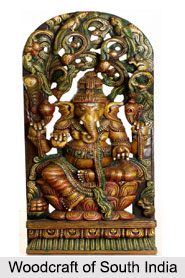 Crafts of South Indian States appear to be an essential part of the lives of South Indians. The prosperity of South India can be seen in its handicrafts which are very popular. The states of South India have attracted the attention of connoisseurs of the craft world and have a relatively good demand not only in the Indian market but international market as well. South Indian craft has its own appeal and magnificence which catches the attention of a large number of people from across the world.
Crafts of South Indian States appear to be an essential part of the lives of South Indians. The prosperity of South India can be seen in its handicrafts which are very popular. The states of South India have attracted the attention of connoisseurs of the craft world and have a relatively good demand not only in the Indian market but international market as well. South Indian craft has its own appeal and magnificence which catches the attention of a large number of people from across the world.
Popular Crafts of South Indian States
Crafts of South Indian States are basic part of Indian society which characterizes its cultural multiplicity. Following are the popular crafts of South Indian States:
Woodcrafts
Woodcraft of South India has some different styles which are famous across the globe. It is a popular craft in South India because this area is awarded with plentiful forests which are loaded in different varieties of wood. Wooden handicrafts includes items like shaped figurines, attractive pieces, furniture and accessories, utensils, beads, panels and a lot of more. "Channapatna" in Karnataka and "Kondapalli" in Andhra Pradesh are famous across the world for its wooden toys. Karnataka is famous for carvings and gracefully beautiful decorative pieces made from sandalwood.
Textile Handicrafts
Among all the silk garments, Kanchipuram silk of Tamil Nadu is the most popular one. The other popular handicrafts of this state are items made from palm leaves and Palmyra fibres, metal ware, brass and bronze statues, hand woven clothes and attractive jewellery. Some of the popular handicrafts of Kerala are ivory, gold and silver jewellery, bamboo mat paintings, and different types of lamps, Kathakali masks and dolls.
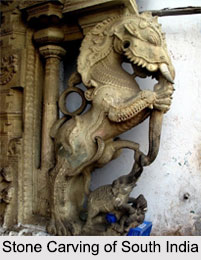 Stone Carving
Stone Carving
Stone carving is another chief handicraft of South India. Some of them are in filigreed, fretted marble or sandstone. Some of the popular places of stone carvings are seen in Meenakshi Temple, Rameshwaram Temple of Tamil Nadu, Tirupati, Gundala Mallikarjuna Swami Temple of Andhra Pradesh and Vithala Temple of Karnataka.
Bidri Craft
Bidri is a particular metal handicraft done in Andhra Pradesh. A particular type of mud from Bidar is used in oxidising and therefore it is called Bidri. Bidri artwork designs have comprised different patterns over the centuries including stars, plants, animals, flowers and other patterns that are typically contained within cautiously arranged balanced geometric fields.
Pottery
Pottery is another form of craft, which is more or less practiced in all south Indian states. Pottery from Karukurichi in Tirunelveli district is noted for its attractive shapes and technical superiority. The base colours for the pottery of Tamil Nadu are red, black and grey. A glossier finish is given after a coating of red ochre. Khanapur in Belgaum district of Karnataka is famous for making large sized containers and jars because of the availability of a local clay.
Embroidery
Embroidery is also very much a part of the South Indians. In Tanjore, Tamil Nadu a different style of applique work is done for decoration on temple hangings. Andhra Pradesh is famous for bead embroidery, which is done on fine fabrics to adorn them. It is usually done on sarees and blouse pieces. Jangaon is famous for this type of work. White and coloured beads are used on dark and bright bases. Karnataka is famous for kasuti embroidery. It is done with two types of stitches and the embroidery has a soft feminine angle.
Metal Crafts
The Metal crafts of Pembarthi originated in the small village of Pembarthi near Hyderabad. The intricate brass work flourished here during the Kakatiya dynasty. Bronze castings are also popular in south India. These are bronze idols based on verses from the Shilpa shastra. Budithi Brassware is also an exquisite craft of Andhra Pradesh. It is well known for creating beautiful shapes out of alloy.
Central Indian Crafts
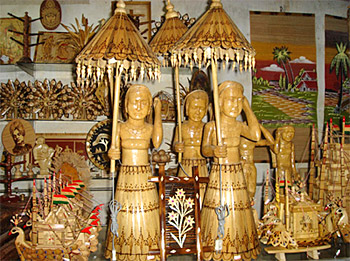 The Central Indian Crafts are unique in style and distinct in composition. The Central Indian Crafts have passed on from generation to generation and can best be described as a mirror of the perennial glory and heritage of the region.
The Central Indian Crafts are unique in style and distinct in composition. The Central Indian Crafts have passed on from generation to generation and can best be described as a mirror of the perennial glory and heritage of the region.
Ancient Crafts in Central India
Central Indian States of Madhya Pradesh and Chattisgarh are known for making crafts. Rewa and Indore in Madhya Pradesh are known for lac jewellry where the lac is placed over the tin foil and melted so that the jewellry is fully covered with lac. The lac jewellry include chokers, earrings, and hair ornaments. Madhya Pradesh has a very attractive anklet where clove shaped beads are casted in one piece called lauang kasauthi. Jewellery from Chattisgarh is available in gold, silver, bronze and mixed metal. Ornaments made of beads and feathers are also very attractive.
Craft of Madhya Pradesh
Craft of Madhya Pradesh is known for different types of printing like direct dyeing and printing, resist dyeing and printing, rogan printing and screen-printing on fabrics. The important Craft centers for printed textiles are Jawad, Bhairongarh, Tarapur, Umedpura and Sheopur. The traditional saris of Madhya Pradesh are the Maheswari sarees, which are made in cotton, pure silk and artificial silk. Madhya Pradesh is also well known for papier-mache items, which are very attractive and realistic. Decorative papier- mache items include, statues of birds, animals, furniture and pottery. Some places of Madhya Pradesh are known for making durries in attractive combination of colours. Leather craft of central India are renowned for their texture and artistic carvings on them, which are copied from structures such as palaces and mosques. The leather is embellished by excessive curing and adorning them with jewellery.
The famous leather craft centers in Madhya Pradesh which are known for making leather products are Gwalior, Indore, Bilaspur and Dewas. The various leather items produced are shoes, jutties, bags and garments. While Gwalior is famous for leather shoes, leather garments are made in Indore and Dewas. Bhopal, the capital of Madhya Pradesh is known for making various items of glass out of which glass tumblers in a variety of designs are very famous. The glasses have tribal designs like leaves and creepers etched on them. Balaghat in Madhya Pradesh is known for stone craft where a magnificent green tone is used to make small decorative items like animal boxes, trays etc.
Craft of Chattisgarh
Chattisgarh has a rich tradition of making decorative and utilitarian items of bamboo. Some of the well-known bamboo products of the state include agricultural implements, fishing traps, hunting tools and baskets. The craftsmen of Chattisgarh are also known for making decorative items out of wood. Different kinds of woods are used like shisham, teak, dudhi sal and kikar for making wooden items. The various wooden craft items are pipes, masks, doors, window frames and sculptures.
